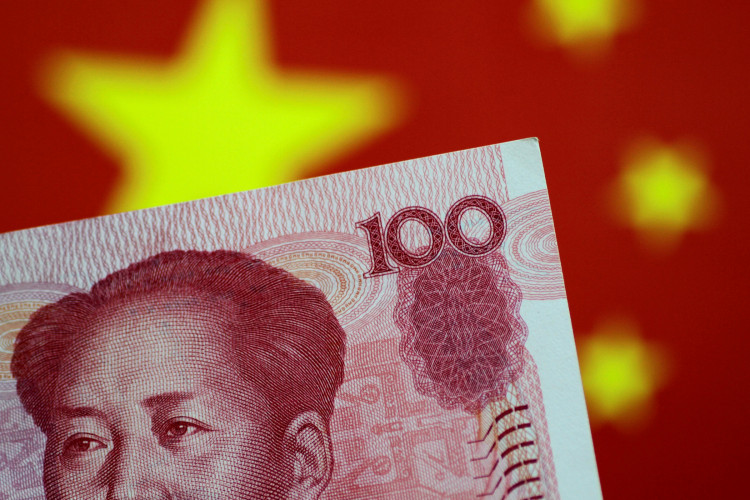China's state-owned banks actively intervened in the foreign exchange market on Monday, as the nation's stock markets experienced a significant slump. This initiative marks a concerted effort by Beijing to counteract the negative sentiment impacting equities and the broader financial landscape.
The Shanghai Composite index recorded its most substantial one-day drop since April 2022, plummeting by 2.7%. The steep decline in China's A-shares prompted the banks to tighten liquidity in the offshore forex market while selling U.S. dollars onshore. "It is a clear policy signal to stabilize the yuan and counter the negative market sentiment on equities," commented Gary Ng, a senior economist at Natixis.
As overseas funds divested approximately $1.6 billion in Chinese equities this year, investor confidence wavered due to signs of economic slowdown in the world's second-largest economy. In response, offshore yuan tomorrow-next forwards surged to a two-month high, reflecting tighter liquidity conditions. State banks curtailed lending to their peers in the offshore market, raising the cost of shorting the currency.
Notably, state banks aggressively sold spot dollars in the onshore market to prevent a rapid decline of the yuan, with specific efforts to defend the 7.2 per dollar level. These measures underscore the complexity of navigating market dynamics, where currency stability is crucial for economic confidence. The onshore yuan was last traded at 7.1963 per dollar, down nearly 1.4% this year, while its offshore counterpart stood at 7.2047.
State banks frequently act on behalf of the People's Bank of China (PBOC) in forex markets, but they may also execute client orders or trade independently. This intervention reflects China's broader monetary policy approach, balancing market forces with regulatory oversight.
In parallel, the PBOC maintained its benchmark lending rates, suggesting limited scope for monetary easing amid the yuan's pressure. Despite recent economic data highlighting China's uneven recovery and deflationary trends, policymakers remain cautious about the currency's stability. Julian Evans-Pritchard, head of China economics at Capital Economics, noted that a rate cut could exacerbate depreciation pressure, prompting the PBOC to opt for quantitative easing tools instead.
As the yuan faces renewed downward pressure, influenced by a robust U.S. economy and anticipated Federal Reserve actions, market watchers anticipate potential rate cuts by the PBOC in the coming months. Additionally, the central bank is expected to increase liquidity injections ahead of the Lunar New Year holidays, employing tools such as reverse repos in open market operations and possibly reducing banks' reserve requirement ratio (RRR).






